On 25 October 2013, the Iranian State News Agency reported that fourteen Iranian border guards were killed and five wounded in clashes with “armed bandits” near Saravan on Iran’s southeastern border with Pakistan. There were also reports of three (to six) soldiers of having been taken hostage and moved across the border into Pakistan. Iranian President Hassan Rouhani has since called for an investigation into the incident.1 The Balochistan region (with areas falling in Iran, Afghanistan and Pakistan) has for long been associated with instability and armed conflict. On the other hand, events of regional and global significance involving Iran have been unfolding in the Middle East and on the global stage. It is argued that disturbances in Balochistan which are being influenced by events outside Iran can have a significant impact on the strategic environment in South Asia.
Sistan-Baluchestan
Balochistan strategically straddles the borders of three volatile countries. In Pakistan, Balochistan is its largest province (43 percent of the country’s land mass) and home to at least five million Pakistani Baloch. While the Iranian province of Sistan-Baluchestan, comprises of 11.5 percent of Iranian land mass and has around 2.5 million inhabitants. In Iran, the Baloch are mainly Sunni Muslims, who share the province of Sistan-Baluchestan with Persians and Sistanis, who are mainly Shia .
Sistan-Baluchestan's proximity to Pakistan and Afghanistan makes it one of the world's most dangerous narcotics, arms, and human trafficking conduits. The involvement of Baloch operated smuggling networks in regional trafficking activity and their extension into Pakistan and Afghanistan, has influenced Iran's perspective of the Baloch. Iran is also worried about the threat Baloch nationalism poses to its territorial integrity and regional stability. This has resulted in a rather severe Iranian approach to governance, development and security in Sistan-Baluchestan. The Iranian attitude in turn has only served to distance the Baloch and accentuate the sectarian divide.
Saravan Attack
Iranian Deputy Interior Minister Ali Abdollahi said that the Saravan attack had been carried out by Iranians who were "members of hostile groups". The Iranian Sunni insurgent group Jaish ul-Adl (“Army of Justice”), formed last year, has claimed responsibility for the hour long encounter.2 Some analysts believe Jaish ul-Adl to be an offshoot of another Sunni terrorist group, but presently passive; the Jundallah, which has been responsible for terrorist attacks on civilians, assassinations and kidnappings in Iran. In retaliation for the Saravan attack, the Iranian authorities on 26 October executed 16 "rebels" held at a prison in Zahedan .3 According to available information, eight of these rebels belonged to Jundallah, while the remaining were hanged on drug offences.
After the attack, Iran lodged a protest with the Pakistani government over the apparent lack of control on illegal movements along the common border.4 Pakistan government has been requested to abide by the mutual security cooperation pact and the accord on extradition of criminals in force between the two countries since 18 February this year.
Over the past year, Iran has seen an upsurge in Sunni separatism in Sistan-Baluchestan, including from another Sunni terrorist group, Harakat Ansar Iran. 5 Recently, Commander of the Islamic Revolutionary Guards Corps (IRGC), Major General Mohammad Ali Jafari said that the IRGC have successfully foiled 11 terrorist attacks in south-eastern Iran in the first half of the Iranian calendar year (March 21-September 22, 2013)6. Jafari blamed “agents of Iran’s enemies and counter-revolutionary groups”. Although the grievances of these groups are local, they are however increasingly linked via media networks to a conceptual framework of “global jihad” and a wider sectarian fight of Sunni versus Shia Islam. Jaish ul-Adl makes extensive use of the social media to network and propagate its cause including posting videos of its actions on its Facebook account.
Jaish ul-Adl
Jaish al-Adl (Army of Justice), which describes itself as a “political-military” movement, is motivated by Baloch nationalism and what they claim, Iran’s oppression of the Sunni Baloch people.7 The group operates primarily in the Sistan-Baluchestan province and according to a statement on the group’s website, is “composed of young Iranian Sunnis who have come together to defend the oppressed to the divine command”. Jaish al-Adl describes Iranian crimes against the Sunni minority in Iran as destruction of mosques, murder and arrest of clergymen.
The external causes driving the group has been the Iranian involvement in Arab countries, primarily Syria, and its attempt to impose the Twelver Shiism (Ithna Ashariya) in Arab states through the “Hezbollah” branches in Lebanon, Saudi Arabia and Bahrain. 8 The group recently called on all Sunnis to provide financial assistance. In addition to the better known Jundallah, the other Sunni Baloch terrorist group in operating in the region is the Harakat Ansar Iran (HAI).
Harakat Ansar Iran (HAI)
Harakat Ansar Iran (HAI) differs from its predecessor, Jundullah, in being more than regional in its perspective and joining their cause with wider Sunni issues. 9 Recently HAI made an appeal, on a Saudi-based pan-Arab satellite channel (Wesal TV), calling on Sunnis to support the group by sending arms. HAI is cooperating with Sepah-e Sahaba Iran (SSI), another Sunni extremist group with ties to Pakistani terror group Sipah-e-Sahaba10 Pakistan.11 Operationally HAI also employs suicide bombing and has claimed to have targeted IRGC including members of its elite Qods Force, in Chabahar.12
Assessment
The Islamic Republic of Iran has been the target of the US, Israel, and the Gulf Arab monarchies led by Saudi Arabia. In addition to the crippling effect of the economic sanctions due to its nuclear programme, the prospect of the revival of a nationalist Baloch insurgency can severely impact stability in Iran and subsequently the entire region.
Further even though, the grievances of the Baloch Sunni extremist groups in Iran are local, they are getting increasingly linked by ideology and via media networks to a conceptual framework of “global jihad” and the larger sectarian strife between the Sunni versus Shia Islam; or in way a proxy Iran versus Saudi Arabia tussle in the region. Iran recently blamed explicitly its Sunni rivals Qatar and Saudi Arabia for funding and inciting Sunni separatist movements in the country.13
The finger pointing on Sistan-Baluchestan has led Iran to foment trouble in the Saudi backyard- Yemen. Iran has been lending support to the Houthis, a Zaidi Shia insurgent group operating in Yemen. The Houthi insurgency besides destabilizing parts of North Yemen has managed to bring trouble to the Saudi province of Jizan
Iran is a key stakeholder in the ongoing discussion over peace talks on Syria and has covertly been influencing ground action in the country. A statement published in Persian on the website of Jaish al-Adl, after the Saravan attack, read as: “This successful operation is an answer to the violent crimes of Sepah (IRGC) in the Islamic land of Syria and is also an answer for oppression and crimes the regime has committed against the oppressed Sunnis of Iran.”14 On the other hand, Basij, Iran’s volunteer paramilitary organization operating under the IRGC15 has blamed the US and Israel for the attack.
The border incident at Saravan assumes significance not only by virtue of its geopolitical location or the sectarian tensions being fanned allegedly by Saudi Arabia and Qatar, but also due to the critical nature of developments concerning Iran on the global stage. Negotiations between Iran and the P-5+1 on the Iran’s nuclear programme have picked up pace after the election of Rouhani as Iran’s president, his recent address to the UN General Assembly and his telephonic discussions with the US President. The subsequent fallout of these events and the US position on Syria has adversely impacted the US-Saudi-Israeli equilibrium in the Middle East, which makes a case for creating ‘distractions’ on Iran’s eastern borders. Israeli Mossad agents have in the past posed as US spies to recruit members of Jundallah to fight their covert war against Iran.16
Given the swift Iranian reaction to the Saravan attack, further disturbances in the area have the potential to raise Sunni-Shia tensions in Afghanistan and Pakistan as well. As Afghanistan prepares for its crucial presidential and provincial elections early next year, sectarian tensions will be an added source of instability.
Besides the spilling over of the Syrian conflict to the region and rise of sectarian tensions, India’s concerns would include the Chabahar port, its planned sea-link to Afghanistan and Central Asia, which is located in Sistan-Baluchestan province. In October 2012, a suicide bomber killed two guards at a mosque in Chabahar. Earlier in 2010, an attack by two suicide bombers at the same mosque had killed 39 people.
India would be alert to the fact that as the Syrian conflict drags on and the US stand on Iran and its nuclear programme softens, the frequency and intensity of insurgent and proxy activity in Balochistan is likely to increase to the detriment of peace and stability in the region.
(The author is a Defence Analyst based in Delhi)
Endnotes
- Iran president calls for probe into border shooting, The Iran Project, October 26, 2013. http://theiranproject.com/blog/2013/10/26/iran-president-calls-for-probe-into-border-shooting/
- Joanna Paraszczuk. Iran Spotlight: Sunni Insurgent Group Jaish ul-Adl Claims Responsibility For Attack On Border Guards, EAWorldView, October 26, 2013. http://eaworldview.com/2013/10/iran-spotlight-sunni-insurgent-group-jaish-ul-adl-claims-responsibility-attack-border-guards/
- Iran 'hangs 16 rebels' in reprisal for Pakistan border killings, Yahoo news, October 26, 2013.
http://news.yahoo.com/14-iran-guards-killed-clashes-pakistan-border-060832305.html - Iran protests to Pakistan over negligence of terrorist movements on border area, The Iran Project, October 26, 2013. http://theiranproject.com/blog/2013/10/26/iran-protests-to-pakistan-over-negligence-of-terrorist-movements-on-border-area/
- Iran protests to Pakistan over negligence of terrorist movements on border area, The Iran Project, October 26, 2013. http://theiranproject.com/blog/2013/10/26/iran-protests-to-pakistan-over-negligence-of-terrorist-movements-on-border-area/
- Eleven terrorist attacks foiled in SE Iran in 6 months: IRGC commander, The Iran Project, October 20, 2013.
http://theiranproject.com/blog/2013/10/20/eleven-terrorist-attacks-foiled-in-se-iran-in-6-months-irgc-commander/ - New Iranian Sunni jihadi group claims car bombing, calls for recruits, Iran Military News, December 28, 2012. http://iranmilitarynews.org/2012/12/28/new-iranian-sunni-jihadi-group-claims-car-bombing-calls-for-recruits/
- Sunni opposition warns of increased Iranian subversive activity designed to disseminate Shiite doctrine, Iran Daily Brief, June 07, 2013.
http://www.irandailybrief.com/2013/06/07/sunni-opposition-warns-of-increased-iranian-subversive-activity-designed-to-disseminate-shiite-doctrine/ - Joanna Paraszczuk. Iran Analysis: Sunni Separatists Harakat Ansar Iran Call For Arms on Saudi TV, July 22nd, 2013. http://eaworldview.com/2013/07/iran-feature-sunni-separatist-spokesman-calls-for-arms-via-saudi-satellite-channel/
- The Sipah-e-Sahaba Pakistan (SSP) (‘Soldiers of the Companions of the Prophet’) is a pro Al-Qaeda Sunni sectarian group and the largest Islamic extremist group in Pakistan. It’s current name is Alhe Sunnat Wal Jamaat but is still referred to as the SSP. SSP was formed in the early 1980s in Jhang in reaction to the Iranian revolution of 1979, and aims to fight Shia influence in Pakistan in the wake of the creation of the Islamic Republic of Iran. Its ultimate goal is to create a Sunni state in Pakistan.SSP accuse Iran of sponsoring extremist Shia groups in Pakistan and have targeted Iranian interests in retaliation for killings of Sunni leaders.
- Sistan and Balochistan Sunni terror group Harakat Ansar Iran announce cooperation with Sepah-e Sahaba, Iran Military News, December 07, 2012. http://iranmilitarynews.org/2012/12/07/sistan-and-Balochistan-sunni-terror-group-harakat-ansar-iran-announce-cooperation-with-sepah-e-sahaba/
- Ibid
- Iran’s Sunni Jihad groups — Thinking Globally but Acting Locally, Iran Military News, March 11, 2013. http://iranmilitarynews.org/tag/harakat-ansar-iran/
- Arash Karami. Sunni Group Takes Credit for Attack That Killed 14 Iranians, Iran Pulse, October 27, 2013. http://iranpulse.al-monitor.com/index.php/2013/10/3123/sunni-group-takes-credit-for-attack-that-killed-14-iranians/
- Ali Alfoneh. The Basij Resistance Force, USIP.
http://iranprimer.usip.org/resource/basij-resistance-force - Mark Perry. False Flag, Foreign Policy, January 13, 2012 http://www.foreignpolicy.com/articles/2012/01/13/false_flag?page=full&wp_login_redirect=0
Published Date: 6th November 2013, Image source: http://previous.presstv.ir

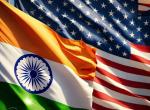
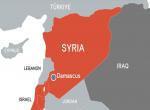
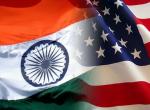

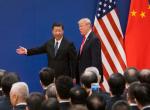
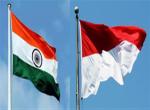


Post new comment